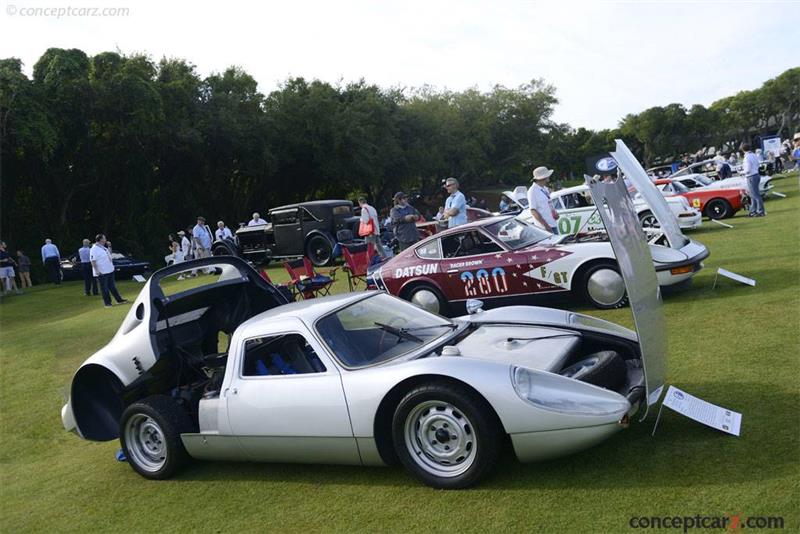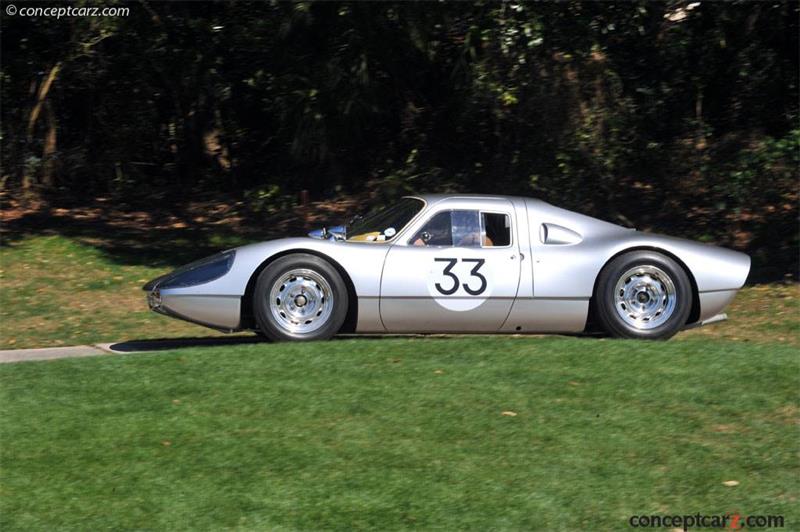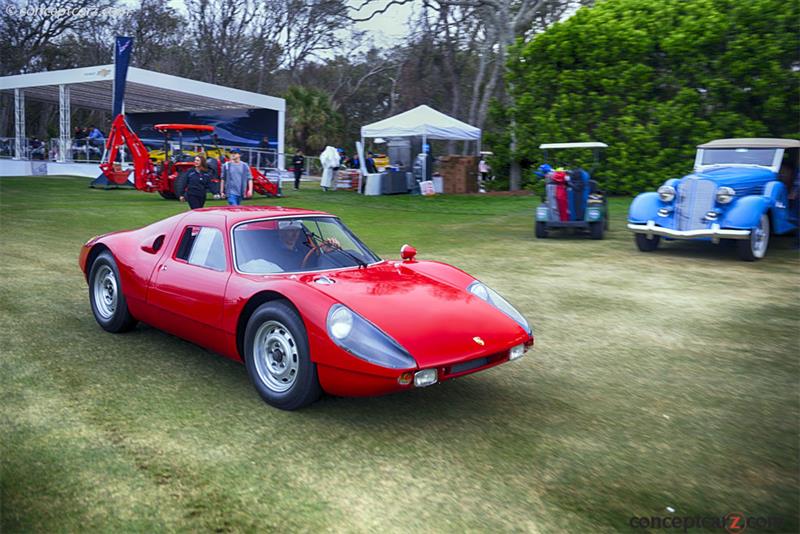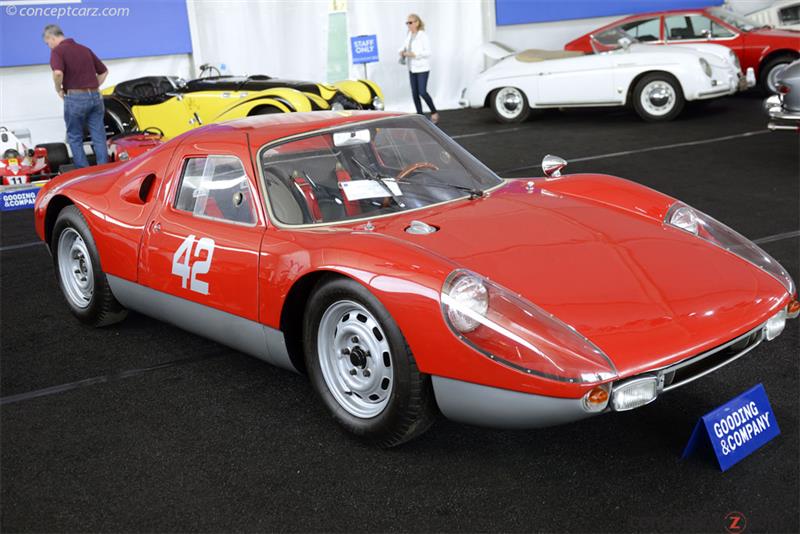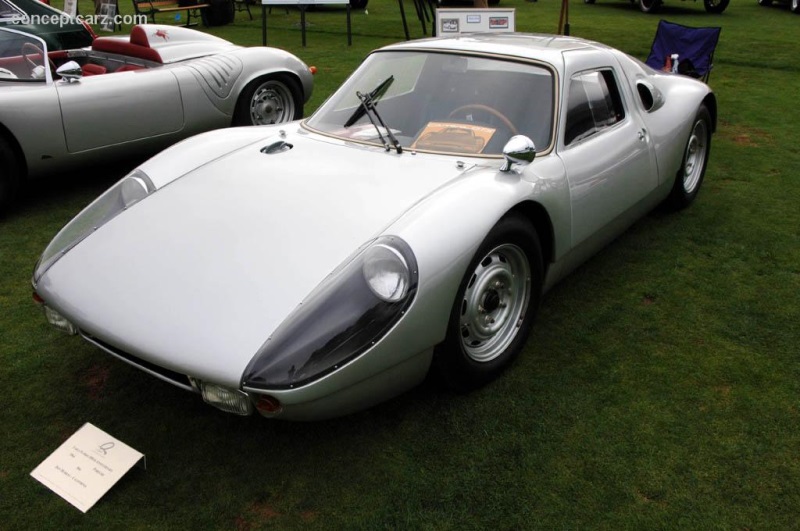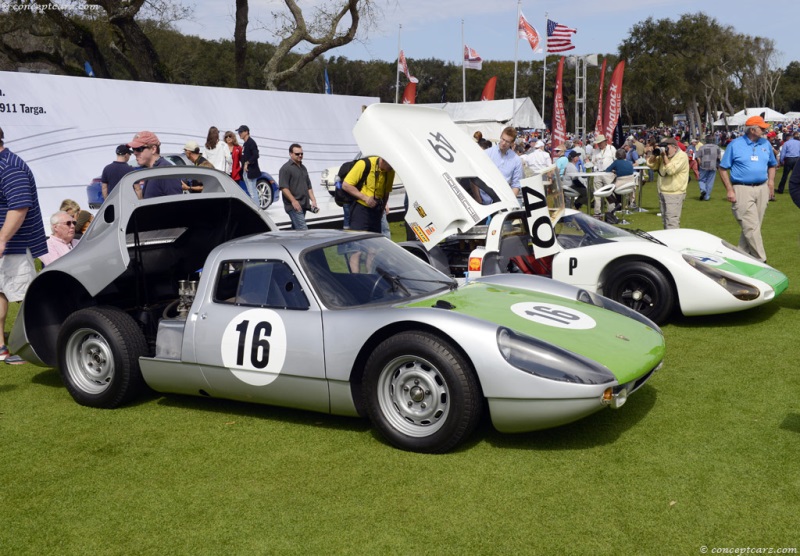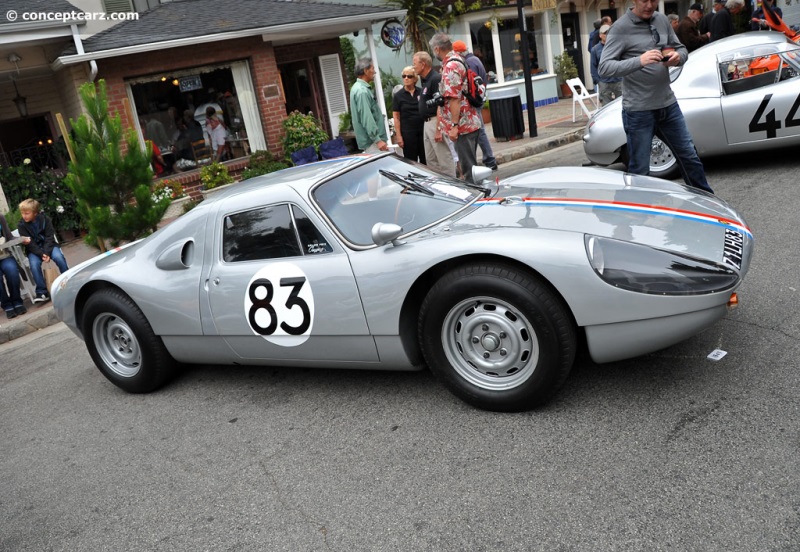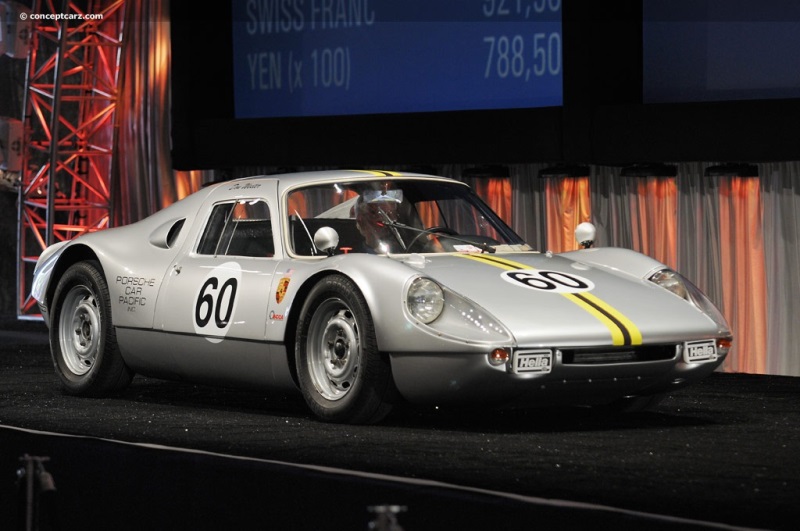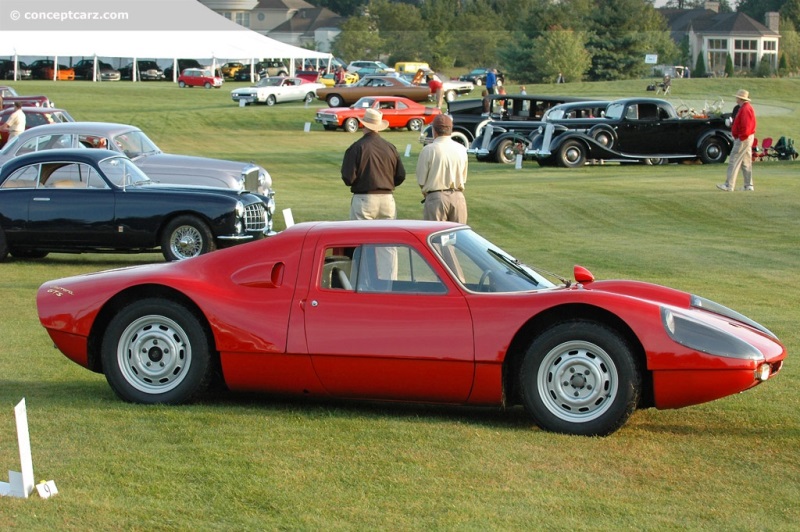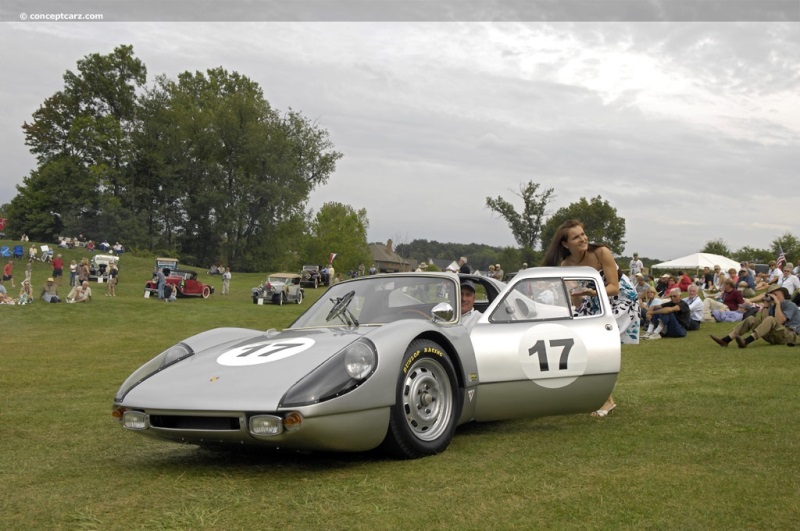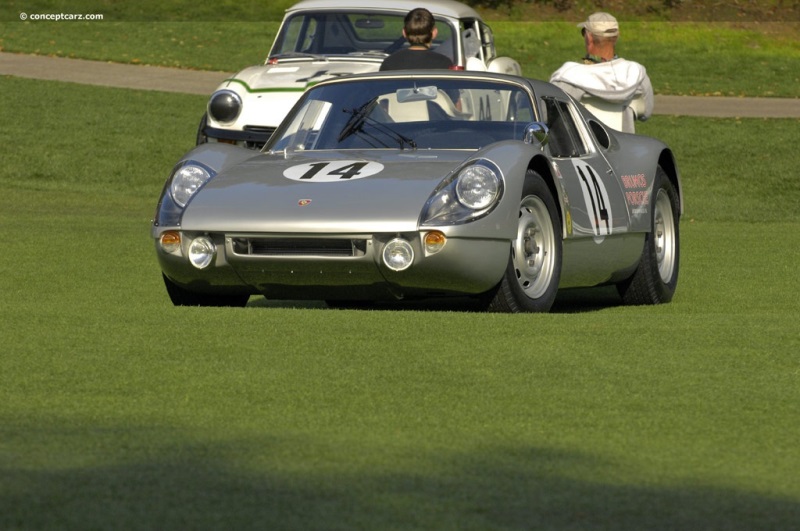1964 Porsche 904 Carrera GTS Navigation
1964 was a monumental year for Porsche with the introduction of the 911 as its all-new production car and the arrival of the 904 designed to compete against the world's fiercest competition. Both the 904 and 911 were designed F.A. Porsche and were equally masterful in their respective purposes. The 904 was the final Porsche sports racing car that was developed with some intention for road usage, and the cars were offered with all necessary road equipment. The Type 904 was officially called the Carrera GTS due to the Porsche and Peugeot dispute over numeric designations with '0' in the middle. 
Coupe
Chassis #: 906-002
View info and history
Auction entries : 1Porsche's experimentation with fiberglass began a decade earlier, around 1954, and had filed for patents relating to its use in the construction of automobiles. The use of fiberglass construction would become popular in sports car production, particularly in the United States, but Porsche's use of the material in significant application did not occur until the 904, and that was preceded by much consultation with aircraft manufacturers that had pioneered the use of the material. The fiberglass material was laid over a stamped-steel chassis allowed for a very lightweight package, and the 904 initially tipped the scales at a svelte 650 kg (1,433 lbs). Along with lightweight construction, the 904 made ample use of aerodynamics, along with a small frontal area which allowed the 904 to achieve top speeds that exceeded those of prior Porsche sports racing cars. The Porsche 904's use of the four-cam four-cylinder engine, designed by Ernst Fuhrmann, represents the significant final application of the powerplant. It had been in use for a decade, yet remained competitive through its potent design, durability, and tuneability. The Type 587 2.0-liter engine, used by the 356 Carrera 2, was equipped with dual Triple-choke Weber carburetors, a full racing exhaust system, and produced approximately 175 horsepower at 6,800 RPM. In the road-going guise, the 587/2 engine offered 155 horsepower. The engine bay was made large enough to accommodate a six-cylinder engine, as well as the 2-liter version of the F1 flat eight. The engine was backed by a five-speed manual transmission with internals developed for the 911's transmission but received a different casing better suited for its mid-engine layout. Disc brakes at all four corners provided the stopping power and steering were handled by a ZF rack-and-pinion setup. The engine and suspension were bolted directly to the steel structure, resulting in a reduction of noise and vibration to the passenger compartment. The body design was penned by Ferry Porsche's eldest son (28 years old), 'Butzi,' and manufactured by the Heinkel aircraft company. The design was both functional and elegant, with a full-length character line, low 41.9-inch height, and rakish lift-up tail. The suspension, comprised of double wishbones in the front and rear, was sourced from the Zuffenhausen firm's recent Formula 1 experience. Porsche had axed its expensive Formula 1 program at the end of 1962, freeing up the German manufacturer's limited technical resources. During the early 1960s, the Type 356-based Abarth-Carreras had flown the Porsche flag in international GT racing, promoting the Porsche brand and improving the road car range along the way.Porsche's new racing machine was introduced at a press launch in November 1963 at the Solitude circuit in Germany, and during its racing career would achieve over 300 class victories and 145 overall wins in the 1,300 race entries. Of the first ten examples completed, nine were kept for works race team use. A minimum of 100 road-usable cars had to be made to meet the FIA's homologation requirements, making the Type 718 RSK obsolete due to its complex spaceframe construction. Instead, Porsche's Technical Director, Dr. Hans Tomala, followed a similar path to Colin Chapman's Lotus Elite, utilizing fiberglass for the new mid-engined GT racer. While the Elite used an all-composite formula, the Type 904 used fiberglass for the body with the chassis comprising a pair of steel, cross-braced, box sections, to which the fiberglass bodyshell was bonded. 
Coupe
Chassis #: 904-006
Auction entries : 1An example raced in the prototype class at Daytona in February of 1965 but failed to finish. Its first international success followed in March at Sebring, where the Briggs Cunningham and Lake Underwood driven Type 904 won its class and finished 9th overall. On high-speed tracks, the small-capacity Porsche contested class victories, but on technical circuits, such as the punishing Sicilian Targa Florio, the agile 2-liter cars were at much less of a disadvantage to their larger-engined opposition. Since the Targa Florio had become part of the World Sportscar Championship in 1958, the nimble Porsche's had won the Sicilian classic on three occasions. The Type 904 continued that winning tradition by scoring a debut victory piloted by Colin Davis and Antonio Pucci. In May of 1964, Ben Pon and Gunther Koch placed 3rd at the Nürburgring 1,000 kms in a production 904, while at Le Mans all five 904s entered finished, the highest in 7th place overall. At the Reims 12 Hour race, eight examples finished in the top 20, the highest in 5th place. The 1965 season began with the Böhringer/Wütherich 904 finished 2nd overall in the Monte Carlo Rally. The 904 secured numerous podium finishes and continued to dominate its class during the 1965 season, but without any overall endurance racing victories. For the European Hill-Climb Championship, lightweight versions with spyder coachwork were constructed, but the compromises enforced by the racing regulations at the time curtailed its potential. 
Coupe
Chassis #: 906-011
View info and history
Auction entries : 1A second series of 100 Type 904 sports cars were to be built for 1965 with the 911's six-cylinder engine, but homologation requirement changes convinced Porsche to abandon the plan, realizing that such a car would not be competitive. Its successor, the Carrera 6, was an all-new 2-liter sports car and better suited for the evolving regulations and increasing competition. Of the 120 examples of the 904 built, 104 were equipped with four-cylinder engines, and ten received the 911's six. An additional six examples were powered by the F1-type flat eight. 31 examples went to the American shores. The Porsche Type 904 was capable of sprinting from zero-to-sixty mph in as little as 5.5 seconds and could be geared for 160 mph.
by Daniel Vaughan | Jun 2021

Coupe
Chassis #: 906-002
View info and history
Auction entries : 1
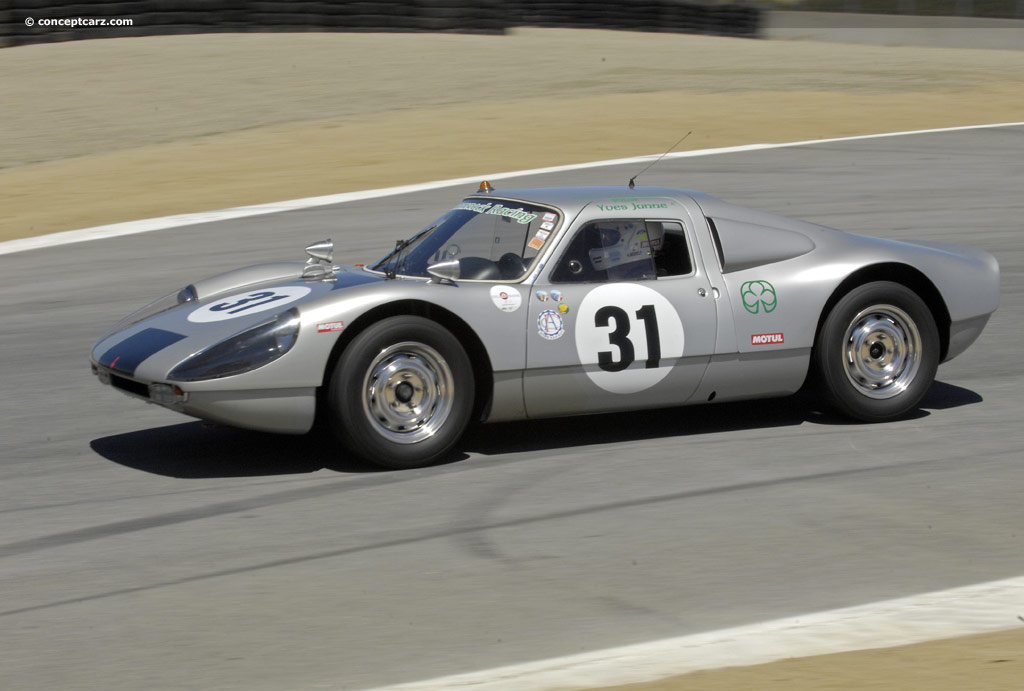
Coupe
Chassis #: 904-006
Auction entries : 1
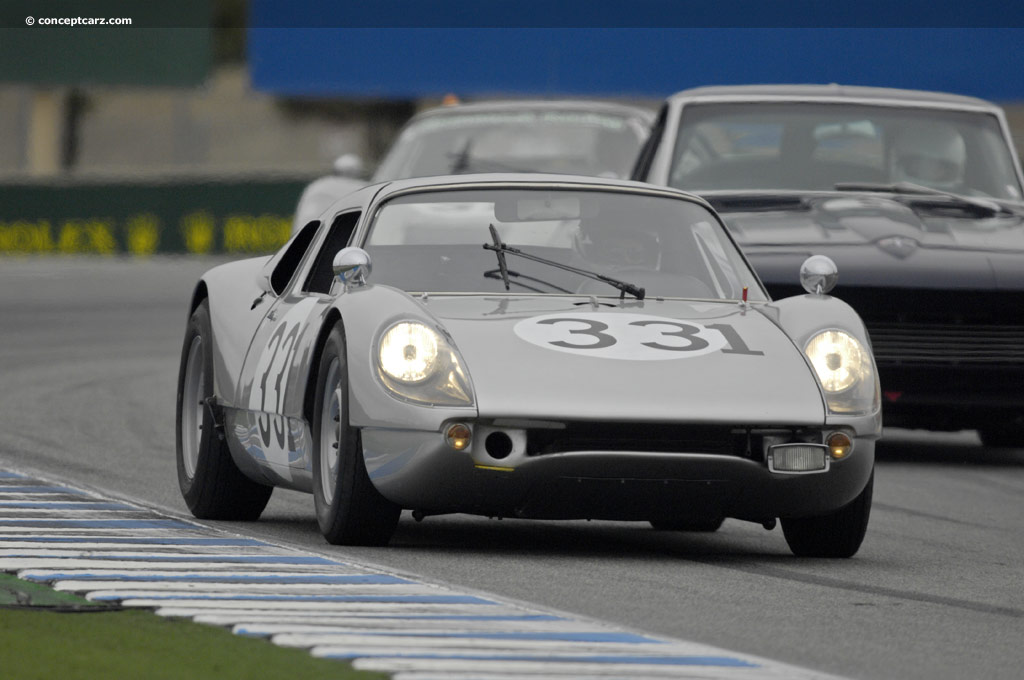
Coupe
Chassis #: 906-011
View info and history
Auction entries : 1
by Daniel Vaughan | Jun 2021
Related Reading : Porsche 904 GTS History
Porsches range-topping sports cars have often been at home on both road and racetrack. But while todays, say, GT3 RS is a formidable track day weapon, its still more of a road car setup for track use than the other way around. The RS is not too loud to be driven to the country club. It offers great visibility from the drivers seat. It is reliable and robust enough to be used daily. That balance....
Continue Reading >>
Continue Reading >>
Related Reading : Porsche 904 History
The Porsche 904, also known as the Porsche Carrera GTS, was designed by Ferdinand Butsi Porsche and introduced in 1963. GT Homologation rules stated that at least 100 examples needed to be produced in a twelve month time period. Porsche knew that selling 100 race cars would be difficult so they built the 904 as a street legal race car. Three prototypes were built and tested vigorously near the....
Continue Reading >>
Continue Reading >>
- 1964 Porsche 904 Carrera GTS Menu
- Article
- Image gallery
- Valuation
- Specifications
- Profiles
Targa Florio VehiclesSports Racer Vehicles
Similarly Sized Vehicles
Porsche
Similar Vehicles
Similar Automakers
Similarly Sized Vehicles
from 1964
1964 Porsche 904 Carrera GTS Vehicle Profiles
Recent Vehicle Additions
Related Automotive News

1964 Nurburgring 1000 Kilometers: Survive for One Last Victory
During the late 1950s, Richie Ginther would begin a relationship with John von Neumann and this partnership would result in one of the most dominant periods of American sportscar racing in which Ginther and Porsche would be virtually unbeatable. Nearly...

From Lucybelle to DHL: Historic Porsche Competition Cars Race to Gooding & Company's Pebble Beach Auctions
The very best of Porsche excellence will come to Pebble Beach with a 1959 Porsche 718 RSK, a 1969 Porsche 90802, a 2007 Porsche RS Spyder Evo, and more.
Gooding %26 Company, the official auction house of the Pebble Beach Concours dElegance®,...

Porsche Honors Hurley Haywood On 70Th Birthday
Endurance racing legend born May 4, 1948
Atlanta, Georgia. Porsche congratulates one of its most decorated ambassadors, Hurley Haywood, on a shared anniversary The five-time Rolex 24 Hours of Daytona winner turns 70 today, just a month before...

THE McLAREN F1
FOR THE DRIVER VITALLY – AS IN ONE OF McLARENS WORLD CHAMPION RACING CARS – DRIVER AND VEHICLE BECOME ENTIRELY AS ONE
The primary design consideration for the McLaren F1 has been to make it without reserve a drivers car, an extremely high-performance...
RRDC VOTES IN 37 NEW MEMBERS FOR 2013
HILLIARD, Ohio (Nov. 7, 2013) - Thirty-seven race-car drivers and motorsports professionals have been voted into the Road Racing Drivers Club in 2013. The group includes 13 Regular Members from the open-wheel and sports-car racing ranks, 20 Associate...

1964 Nurburgring 1000 Kilometers: Survive for One Last Victory
During the late 1950s, Richie Ginther would begin a relationship with John von Neumann and this partnership would result in one of the most dominant periods of American sportscar racing in which Ginther and Porsche would be virtually unbeatable. Nearly...

































